Ce blog a voulu présenter, tout au long de ses quatre années d’existence, une conception qui pose en principe que tous les peuples jouissent également d’un droit à l’existence, d’un droit à l’autodétermination et d’un droit naturel à la prééminence politique, religieuse et culturelle sur leurs terres ancestrales. Cet ensemble de droits fondamentaux non discriminant et d’application universelle concerne tous les peuples, c’est-à-dire aussi les peuples autochtones européens. Nous considérons comme admis que les peuples autochtones européens ne sont ni des sous-peuples, ni des non-peuples et que prétendre le contraire procède d’une pensée discriminatoire et raciste.
Les droits fondamentaux dont nous parlons charpentent notamment la Déclaration des Nations unies sur les droits des peuples autochtones (2007). Ce corpus juridique onusien est donc une référence importante de la dynamique politique que nous avons nommée « autochtonisme ». Car dans notre esprit, l’autochtonisme européen n’est pas seulement une « pensée » ou une idéologie : c’est aussi, et peut-être surtout, une dynamique fondée sur notre droit à l’existence, une stratégie dont l’objectif est d’assurer la résilience en même temps que la libération des peuples autochtones européens. En voici un exposé succinct.
- Reconnaître l’ennemi principal
Nous posons comme un fait le processus toujours en cours d’effacement et de remplacement de notre peuple sur ses terres ancestrales. Ce processus conditionne notre « état présent », celui que l’on subit et qu’il s’agit de modifier. A partir de ce constat sur l’état présent, nous devons fixer une stratégie qui nous mènera de l’état présent à l’état désiré. Cependant, avant d’élaborer une planification stratégique, il convient de bien identifier les causes du processus et surtout, au risque de servir les intérêts de l’ennemi, de ne pas les confondre avec ses conséquences : toute erreur de ce type ferait courir le risque de stratégies inefficaces, voire néfastes. Par exemple, certains considèrent que l’islam est l’ennemi principal. En bonne logique, semble-t-il, ils invoquent pour le contrer les « valeurs républicaines », telle la laïcité. Or précisément, la laïcité est conçue par les républicains comme un moyen ou une “méthode“ (Manuel Valls) permettant de faire vivre ensemble musulmans, juifs et chrétiens (entre autres). Autrement dit, la laïcité conditionne la viabilité d’un modèle de société ouvert aux courants migratoires, donc à l’islam. Elle garantit que tout se passera bien et lève les objections quant à l’installation de masses extra-Européennes dans le corps politique. La laïcité, et d’une manière générale les valeurs « universelles » de la République, sont la légitimité d’une ingénierie sociale qui réinitialise la société afin que plus rien dans celle-ci ne s’oppose à l’intégration de populations étrangères. Si l’immigration de peuplement est un fait, le régime construit sur les valeurs dont nous parlons est une cause et l’islamisation une conséquence.
Or, l’ennemi principal se niche dans les causes, jamais dans les conséquences. Qui est responsable du Grand Remplacement ? Le régime qui est à la manœuvre et le nie, ou l’immigré qui bénéficie des politiques d’immigration que ce régime a mis en place ? La République qui est à l’origine de notre situation présente et qui la verrouille, obérant ainsi notre destin, ou l’étranger qui n’est qu’un pion dans un jeu destiné à nous effacer ? Le marionnettiste ou la marionnette ?
On devrait connaître la réponse, tant elle paraît évidente. La République qui a volontairement configurer l’organisation et le fonctionnement de la société de manière à la rendre compatible avec des hommes venus de toute la planète, la République qui a provoqué et laissé faire l’immigration de masse, la République qui a installé, intégré et naturalisé des millions d’immigrés, est la seule responsable. Voici dans les grandes lignes (ce texte est un texte de synthèse, le lecteur peu accoutumé à notre propos se reportera utilement aux autres articles de ce blog), voici donc rapidement pourquoi le Grand Remplacement participe de la nature du régime en place et n’est en aucun cas un phénomène accidentel :
- La République est fondée sur le « pacte républicain » et le pacte républicain est fondé sur le principe d’universalité : celuici est ouvert à tous les hommes « sans distinction d’origine, de race ou de religion ».
- La République considère que le « peuple français » est un agrégat d’individus individuellement associés par un contrat. Ainsi les Français de souche se seraient contractuellement associés le 14 juillet 1790 durant la fête de la Fédération. Ce jour là, selon la mythologie républicaine, le pacte républicain aurait transféré un à un (individuellement) chaque Français d’une nation ethnique, organisée selon des valeurs identitaires, à une nation civique, organisée selon des valeurs universelles (nous avons appelé ce processus à la fois mythologique et juridique, le « Grand Transfert »). A ce « corps d’associés » dont l’organisation et le fonctionnement reposent sur des valeurs universelles, c’est-à-dire des valeurs acceptables par tous les hommes, se seraient « individuellement » joints les Juifs, puis des immigrés de toute provenance. Ces multiples transferts donneront le corps politique métissé que l’on connaît aujourd’hui.
- Le républicanisme postule l’universalité de la République : le modèle républicain de société est applicable en tous lieux (d’où l’entreprise coloniale républicaine), et permet de faire « vivre ensemble » tous les hommes, sans distinction. Dès lors, puisque le vivre tous ensemble est possible, rien ne justifie le « repli sur soi » et la fermeture des frontières, si ce n’est un « racisme » et une xénophobie irrationnels, d’autant plus, on le sait, que l’immigration est un enrichissement. Evidemment, on peut s’interroger sur le caractère véritablement universel des valeurs de la République et sur leur capacité à faire « vivre tous ensemble » juifs, chrétiens et musulmans. Mais cela revient à remettre ouvertement en cause le pacte républicain qui prétend cimenter l’agrégat artificiel sur la base de ces valeurs. C’est une règle : en République, toute contestation des politiques d’immigration exposera mécaniquement au soupçon d’être raciste et de n’être pas républicain. Cette règle tient à la nature même du régime, à ses fondamentaux, à sa cohérence interne… et non à ses représentants du moment !
- La République est une entreprise d’ingénierie sociale chargée d’installer un modèle de société qui soit conforme aux intérêts de la classe dominante. Cette entreprise progresse en imposant de nouvelles lois. Celles-ci disloquent systématiquement l’ordre social ancien (la famille, les corporations, les communautés, les religions, les nations, les peuples, les sexes…) et instaurent un nouvel ordre fondé sur un désordre sociétal facile à contrôler et à exploiter (individus dissociés, mélangés et opposés ; populations hétérogènes ; individus standardisés ; matérialisme ; relativisme identitaire ; destruction des boussoles culturelles, généalogiques, religieuses, sexuelles…). La République a été conçue par une classe sociale apatride. Elle n’est qu’un outil dont la fonction est de « régénérer » la société à l’avantage de cette classe. La République se confond aujourd’hui avec le Système (mondialiste). Elle en est un aspect en même temps que la matrice.
- Comprendre la force et les moyens de l’ennemi principal
Aucune action ne sera couronnée de succès si l’on n’a pas compris les bases mythologiques qui structurent le régime en place et légitiment le modèle de société qu’il entend imposer (foi dans l’idéologie du contrat, croyances en des « valeurs » et en des fonctionnements sociaux qui seraient acceptables par tous les hommes, croyance en l’unité du genre humain, foi en l’Homme standardisé par la citoyenneté juridique, etc.). Cependant, désigner la République comme l’ennemi principal et surtout comprendre en quoi la République (ou le Système) est l’ennemi principal ne suffit pas pour engager une action efficace, voire qui ne soit pas carrément suicidaire. Car il faut encore et préalablement mesurer les rapports de forces et avoir notamment une juste idée de la puissance, des méthodes d’action et des moyens de rétorsion de l’ennemi.
Tout d’abord, celui qui estime que la République-Système est un régime politique démocratique et loyal commet une grave erreur. La République est un système représentatif qui assure automatiquement le pouvoir à la classe dominante. Nous l’avons déjà expliqué, nous ne reviendrons pas sur ce point. Ensuite, la République est un système totalitaire qui occupe officiellement tout l’espace social : l’Etat est républicain, la police est républicaine, les armées sont de la République, l’Ecole est républicaine, les médias sont républicains, la Justice est républicaine, l’espace social est contrôlé par des lois républicaines, etc. Enfin, trait typique des systèmes totalitaires, il est formellement défendu de contester le régime en place. La Constitution, le code pénal et diverses autres lois interdisent ainsi que l’on remettent en cause la forme républicaine de gouvernement.
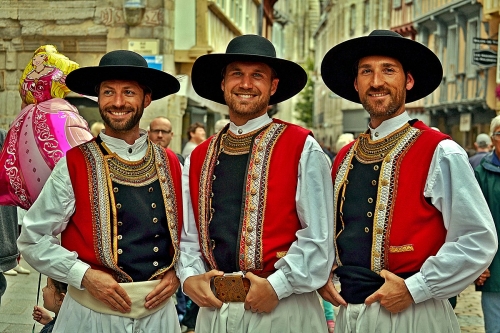
Concrètement, cela veut dire quoi ? Concrètement, cela veut dire que la classe dominante a mis à son service les forces armées, la police, la magistrature, l’Enseignement, les médias et tout l’arsenal législatif nécessaire pour défendre ses intérêts de classe. Concrètement, cela veut dire que l’Etat a fait sécession du peuple, qu’il s’est tourné contre la nation autochtone et qu’il lui est devenu étranger, bref, qu’il doit être considéré comme un Etat plus « colonial » que « national ».
L’Etat est l’outil de la classe dominante. C’est lui qui met en œuvre les politiques d’immigration et qui construit la société métissée. C’est lui qui réprime la contestation et qui protège la classe dominante. Sans lui, rien ne serait possible. L’Etat républicain n’est pas notre ami, nous sommes ses indigènes colonisés et nous devons agir en tant que tels, en ayant une claire conscience de notre statut subordonné.
- Un peuple autochtone emprisonné dans un corps d’associés
La république-Système a engendré un « corps d’associés » (Sieyès) multiethnique. Ce corps d’associés improprement appelé « peuple français » ou « France » enferme comme une gangue le peuple autochtone. Si en 1790 tous les « associés » étaient des Autochtones, aujourd’hui les Autochtones deviennent minoritaires dans le corps d’associés. Cela signifie que, « démocratiquement » et selon la loi du nombre, le destin des Autochtones dépendra de plus en plus largement des choix, des préjugés, des ressentiments et de la puissance des populations allochtones installées au milieu d’eux.
Cela signifie aussi que le peuple autochtone de ce pays ne dispose pas de lui-même. Le peuple autochtone est un peuple dominé et nié : la République ne le reconnaît pas en tant que tel, ne lui accorde aucun droit en tant que tel, ne le distingue pas. Le peuple autochtone, emprisonné dans le corps d’associés multiethnique, perd quant à lui la conscience de ses intérêts, de sa spécificité et de son identité. Il se livre au régime qui a construit la gangue carcérale qui l’étouffe. Pour le moment, manipulé sans avoir connaissance de cette manipulation, il est « sous contrôle ». Le destin qui lui est promis par le régime-Système, et que l’Etat colonial est chargé de mettre en œuvre, est tout tracé : avant peu, il sera totalement dissous dans le corps d’associés et n’existera plus qu’à travers quelques individus faisant figure de bêtes de foire. Alors que faire ?
- Que faire ?
Nous venons de décrire la situation présente et de déterminer l’ennemi principal, celui qui est en l’occurrence à l’origine de notre condition et qui s’efforce de la maintenir, dussions-nous disparaître. Cette situation est épouvantable, tant le rapport de force nous est défavorable. Cependant, d’autres peuples en ont connu de similaires. Certains ont disparus (voyez les Hawaïens, les Pieds-noirs ou les Gorani), d’autres au contraire ont su prospérer. En observant ces derniers (les Juifs, les Roms, les Albanais du Kosovo, les Druzes, les Amish…), il nous est possible de reconnaitre un certain nombre de points communs qui les distingue des peuples moins résilients. Ces « règles de résilience » sont :
- Une forte endogamie
- La pratique de l’entre-soi et le refus du « prosélytisme »
- Le refus de l’assimilation
- L’affirmation d’une conscience ethnique
- Une double règle de moralité (une règle qui s’applique aux Prochains, une règle qui s’applique aux Lointains)
- La capacité à se défendre
- Et surtout, la mise en place d’institutions parallèles à celles du groupe dominant

Considérons que le corps d’associés allochtones, la gangue, soit un « peuple étranger » et que le système politique qui nie l’existence du peuple autochtone et garantit la présence étrangère dans notre pays soit un régime de domination. Il y a encore face au corps d’associés englobant une part significative du peuple autochtone qui ne renonce pas aux pratiques endogames et à l’entre-soi, qui refuse de perdre son identité, qui a une claire conscience de sa lignée, qui pratique au besoin une solidarité discriminante (les « Français d’abord ») et qui est même capable de se défendre. Cette fraction (toujours importante selon nous) du peuple autochtone ressemble donc sur de nombreux points au peuple pied-noir en Algérie. Pourtant, nous savons que ce peuple pied-noir a disparu. Que lui manquait-il pour continuer à exister ? En fait, les Pieds-noirs ont confié leur destin à la République et ont renoncé à s’organiser « en parallèle ». Avoir plusieurs millions d’individus dissociés qui pratiquent isolément les six premières règles de résilience est très bien mais à terme ne sert à rien. La cause est perdue si ces individus ne s’associent pas, ne s’organisent pas, ne créent pas des institutions parallèles susceptibles de leur donner une unité, donc une force, bref, s’ils ne s’émancipent pas du régime de domination.
Donc, à la question « Que faire ? », l’Histoire nous apporte cette réponse : il faut rassembler les Autochtones qui pratiquent spontanément les six premières règles de résilience, puis appliquer la septième règle, c’est-à-dire créer un Etat parallèle autochtone qui résistera au régime de domination et combattra pour les droits autochtones, y compris, in fine, le droit du peuple autochtone à disposer de lui-même.
- Comment faire ce Grand Rassemblement et cet Etat parallèle ?
Nous proposons une double stratégie.
D’un part, une stratégie de conservation qui assurera la résilience du peuple autochtone.
D’autre part, une stratégie de libération qui assurera l’autonomie du peuple autochtone par la conquête de droits collectifs toujours plus importants.
La stratégie de conservation et la stratégie de libération composent deux stratégies intermédiaires qui s’inscrivent dans une stratégie globale dont l’objectif final est la libération du peuple autochtone, c’est-à-dire son émancipation du corps d’associés multiethnique dissolvant. La stratégie de conservation est la première stratégie à mettre en œuvre. L’urgence est d’abord de conserver tout ce qui peut l’être (notre peuple bien sûr, mais aussi sa culture, sa spiritualité ou sa manière de vivre). Ensuite seulement, peuvent être envisagées des actions de reconquêtes libératrices. Nous disons « ensuite », car il nous faut d’abord forger l’outil avant de pouvoir l’employer. Mais, nous ajouterons aussi « parallèlement », car la stratégie de conservation, c’est-à-dire la fabrication et l’entretien des outils de résilience, ne doit pas cesser sous prétexte que la conquête des droits collectifs a commencé.
- La stratégie de conservation
La stratégie de conservation consiste essentiellement à rassembler les Autochtones conscients (« Grand Rassemblement ») et à les organiser. Plusieurs étapes sont nécessaires pour mettre en place les premières structures de résilience.
Nous proposons tout simplement de nous inspirer des stratégies élaborées par les minorités ayant fait la preuve de leur durabilité (Juifs, Roms, Kosovars…) :
- Réunir une Assemblée qui proclame notre existence nationale en tant que peuple autochtone.
Cette première Assemblée, sorte d’assises autochtones, pourrait être réunie suite à l’appel de 8 ou 10 personnalités autochtones, toutes sensibilités confondues, rassemblées dans une sorte de CNR transitoire. Elle pourrait être provoquée aussi à l’initiative d’organisations et d’associations autochtones, voire de communautés locales autochtones fédérées.
- La première Assemblée nomme pour un an un Gouvernement provisoire autochtone
La mission de ce Gouvernement est d’organiser les premières élections autochtones et de mettre en place l’ébauche d’un Etat parallèle autochtone.
- Le premier Parlement autochtone élu se réunit :
- Formation d’un Gouvernement autochtone
- Détermination des missions du Gouvernement
- Définition d’une stratégie de conservation et de libération
- Le Gouvernement autochtone commence ses travaux :
- Mise en place d’un Etat parallèle autochtone
- Formation de Communautés locales autochtones
- Mise en synergie des différentes organisations autochtones (partis politiques, mouvements culturels, associations diverses…) dans le respect de leur autonomie
- Les Communautés locales autochtones se fédèrent tout en gardant leur autonomie et forment une société parallèle autochtone.
A ce stade, si tant est qu’un nombre suffisant d’Autochtones accepte l’existence d’un Etat autochtone apolitique (l’Etat est purement autochtoniste. C’est un Etat national autochtone qui représente la nation autochtone en son entier et non tel ou tel courant politique, culturel ou religieux), à ce stade donc, nous pouvons considérer que les structures de résilience sont mises en place. Les engagements tactiques d’une stratégie de libération peuvent désormais être considérés.
- La stratégie de libération
Revendiquer des droits pour le peuple autochtone de ce pays, mais aussi dénoncer son avilissement, sa marginalisation ou le racisme structurel qui l’accable (antijaphétisme), a deux objectifs principaux. D’une part conscientiser le plus grand nombre possible d’Autochtones afin que ceux-ci intègrent la nation autochtone en sécession. D’autre part, obliger le régime-Système à reconnaître, soit qu’il a commis un crime de génocide au sens de la Convention des Nations unies pour la prévention et la répression du crime de génocide (1948), soit que le peuple français d’avant 1790 existe toujours en tant que « groupe national, ethnique, racial et religieux » (Cf. Convention de 1948)

La reconnaissance du droit à l’existence du peuple autochtone entraînera tous les autres droits collectifs, jusqu’au droit de ce peuple à disposer de lui-même. Le droit à l’existence est donc la clé de voûte de la libération autochtone. La lutte pour imposer ce droit (que tout peuple possède par nature), doit emprunter tous les chemins qui se présentent à nous et prendre la forme d’un harcèlement constant du régime. Tout peut-être prétexte à contestation, à revendication, à querelle, à discussion, à blocages. Il faut obliger le régime à négocier avec le Gouvernement autochtone. Cette négociation vaudra implicitement reconnaissance.
Le peuple autochtone emprisonné, aliéné et remplacé a le Droit pour lui. Son droit à l’existence est acquis du fait même qu’il existe. La contestation de ce droit fondamental est non seulement discriminatoire : c’est d’abord un crime contre l’humanité ! Notre peuple a le droit d’écrire sa propre histoire, indépendamment de l’histoire désirée par le régime politique en place ou le corps politique artificiel, multiethnique et de plus en plus antijaphite, qui a été construit par ce régime. D’autre part, le peuple autochtone, peut, en raison de son autochtonie qui plonge dans la nuit des temps et au nom de l’égalité entre tous les peuples, bénéficier de toutes les dispositions contenues dans la Déclaration des Nations unies sur les droits des peuples autochtones : droit à l’existence ; droit à l’autodétermination politique, économique, sociale, culturelle ; droit de contrôler son propre système scolaire ; droit d’être protégé en tant que peuple distinct, ; droit de filtrer les lois pouvant le concerner ; etc. Ajoutons que nous pouvons faire valoir aussi la loi organique sur la Nouvelle-Calédonie (99-209). Tous les droits octroyés par cette loi aux autochtones mélanésiens de Nouvelle-Calédonie, doivent être accordés, au nom du principe d’égalité proclamé par le régime et du droit international, aux autochtones européens de France. Ceux-ci doivent pouvoir bénéficier, par exemple, d’un statut civil particulier, de registres d’état civil à eux seuls dédiés, de programmes scolaires qui reflètent la dignité de leur histoire, d’un droit civil qu’ils pourront librement déterminer, d’une langue française dont ils seront les seuls décideurs, d’une citoyenneté spécifique, etc.
La cause du peuple autochtone est juste, morale, égalitaire, conforme au droit international et à l’esprit des lois organiques de la République. L’indépendance du peuple autochtone mettra un point final au processus de décolonisation commencé après la seconde guerre mondiale.
C. Les méthodes
La stratégie de conservation (Grand Rassemblement, constitution d’un Etat parallèle autochtone, mise en place de communautés locales autochtones maillant le territoire, etc.) doit se faire à faible bruit et sans avoir recours aux dispositifs administratifs mis en place par le régime. Autrement dit, il ne doit pas y avoir de déclarations en Préfecture !
C’est la stratégie de libération qui pose véritablement le problème des méthodes de lutte. Nous excluons a priori toute forme de violence : le rapport de forces nous est trop défavorable. Notre méthode de lutte doit donc être non-violente et reprendre à son compte les recettes éprouvées de Gene Sharp : succession d’engagements tactiques non-violents permettant d’atteindre un objectif limité dans le cadre d’une stratégie plus large. Prenons un exemple :
Le patrimoine culturel autochtone (églises, châteaux, œuvres d’art, musées, bibliothèques, monuments, etc.) est actuellement géré par des fonctionnaires républicains de la culture, au nom du corps d’associés global. Or, au regard de la Déclaration sur les droits des peuples autochtones et même de la loi organique relative à la Nouvelle-Calédonie, ce patrimoine culturel autochtone doit être restitué au peuple autochtone. Nous pouvons donc revendiquer cette restitution, par exemple en perturbant, selon nos ressources disponibles, des journées du patrimoine (obstruction d’entrée, distribution de tracts, nuisance sonore, etc.), en refusant d’évacuer un site après sa fermeture, en faisant entrer les visiteurs gratuitement, etc. L’essentiel est de faire débat, d’inciter les Autochtones à réfléchir sur leur dépossession et sur leur sujétion, et de forcer le régime à réagir. Un engagement tactique de cette nature va dans le sens des objectifs de la stratégie globale de libération car il révèle, avec tout ce que cela suppose, un patrimoine autochtone confisqué et surtout l’existence d’un peuple autochtone jusque là nié.
En guise de conclusion….
Nous n’avons pas été colonisés par un Etat étranger, mais par une classe sociale apatride qui a pris les commandes de l’Etat national et en a fait un Etat à sa main, c’est-à-dire, de fait, un Etat étranger. Cet Etat étranger est conduit par un régime qui a engendré un « corps d’associés » multiethnique. L’un et l’autre sont responsables du Grand Remplacement et de notre incapacité à disposer de nous-mêmes. Il ne faut donc plus raisonner de l’intérieur de ce régime mortifère. Il faut au contraire raisonner dans une logique de sécession, ou plus exactement de décolonisation.
Cette logique n’est plus « politique » : elle doit être « nationale ». C’est de la nation autochtone en son entier qu’il s’agit. Peu importe les options idéologiques, religieuses ou philosophiques faites par les uns ou les autres. Tout cela doit s’effacer au nom de la défense de l’appartenance commune : l’appartenance à une nation autochtone prisonnière de la gangue multiethnique républicaine.
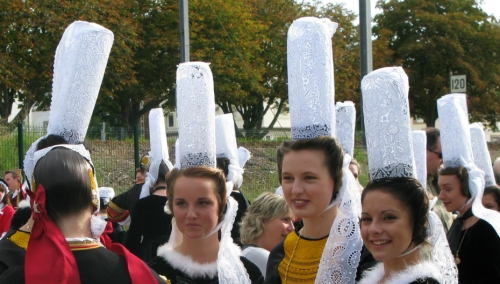
La construction que nous proposons n’est donc pas une construction de politique politicienne : c’est une construction nationale apolitique, areligieuse, mais autochtone. Nous ne parlons pas des futures élections mais de la continuité historique de notre peuple.
Si le peuple autochtone de ce pays ne remet pas en question le régime en place, s’imaginant pouvoir l’infléchir ou l’amadouer, alors le destin de ce peuple est tout tracé : il disparaîtra ! Mais si ce peuple se rassemble et s’organise en société parallèle, alors des droits collectifs lui seront forcément reconnus et sa résilience sera assurée : avant peu il pourra à nouveau écrire sa propre histoire ! Les temps ont changé et il n’y a désormais que deux choix possibles : le soulèvement autochtoniste ou le consentement à notre propre génocide. Le reste ne compte pas.
Antonin Campana





 del.icio.us
del.icio.us
 Digg
Digg

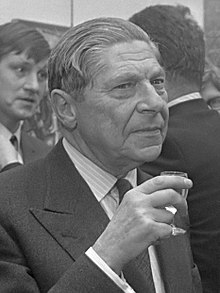 Koestler was a pivotal figure in the post-war generation that rejected communism as “the God that failed”— the title of a celebrated book of essays,
Koestler was a pivotal figure in the post-war generation that rejected communism as “the God that failed”— the title of a celebrated book of essays, 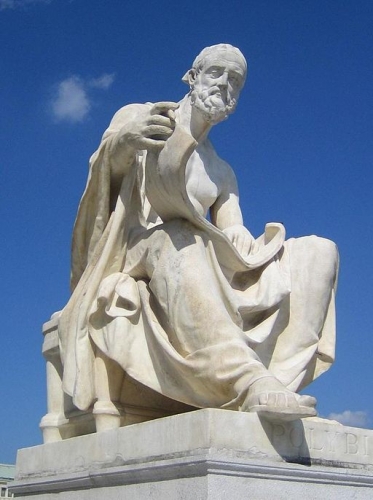
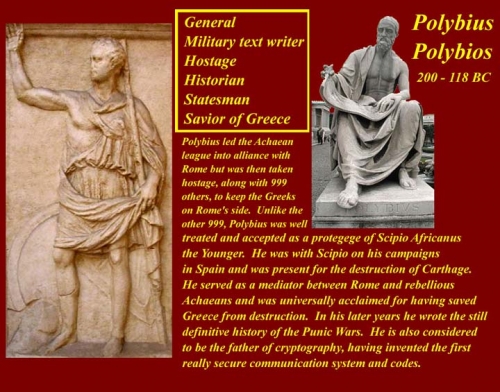
 It is this particular intellectual predisposition toward the synoptic, along with its acceptance of nuance, multicausality and complexity, that has rendered Polybius such an appealing figure over the centuries for theorists of statesmanship and grand strategy. Indeed, in his
It is this particular intellectual predisposition toward the synoptic, along with its acceptance of nuance, multicausality and complexity, that has rendered Polybius such an appealing figure over the centuries for theorists of statesmanship and grand strategy. Indeed, in his 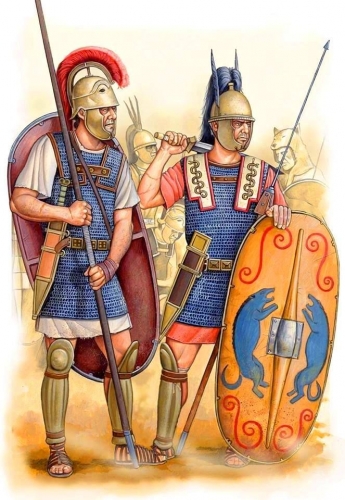
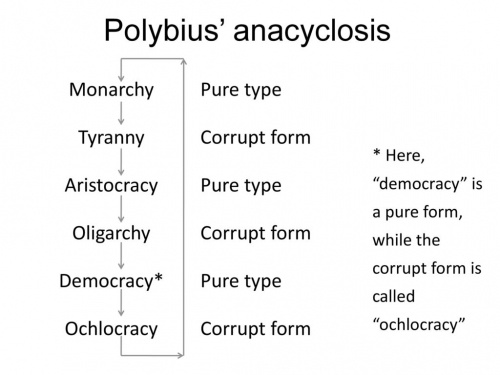
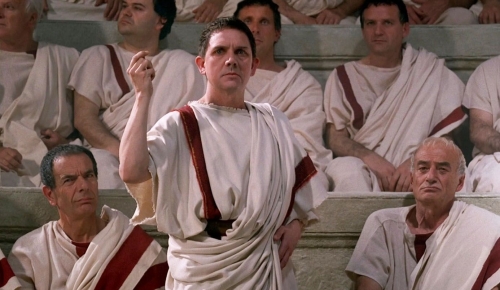

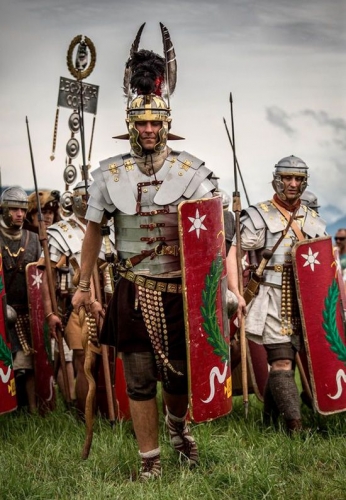
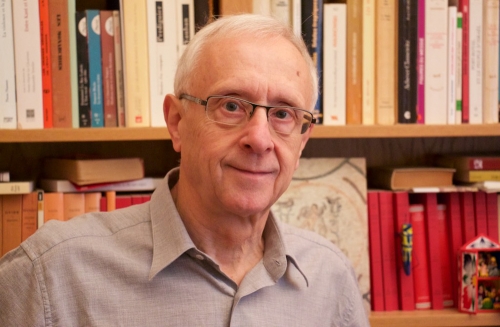
 The Double Standard that Relativism Creates
The Double Standard that Relativism Creates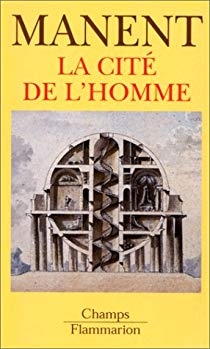 Our flight from the law in the name of more freedom to act has paradoxically undermined the principles for practical action. It turns out that we could not make our own meaning and give ourselves our own laws and ends.
Our flight from the law in the name of more freedom to act has paradoxically undermined the principles for practical action. It turns out that we could not make our own meaning and give ourselves our own laws and ends.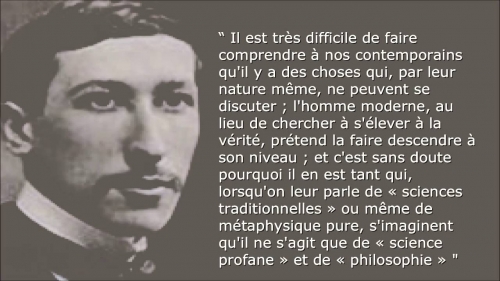
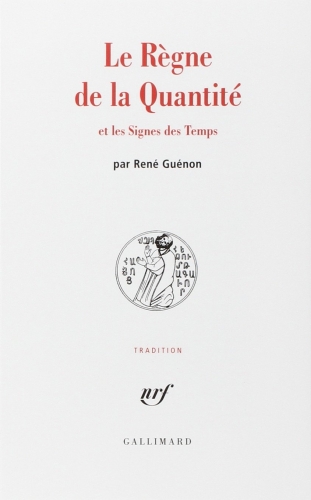 Il a évoqué la suggestion comme Gustave Le Bon. Il va même parler d’hypnose, notre René Guénon !
Il a évoqué la suggestion comme Gustave Le Bon. Il va même parler d’hypnose, notre René Guénon !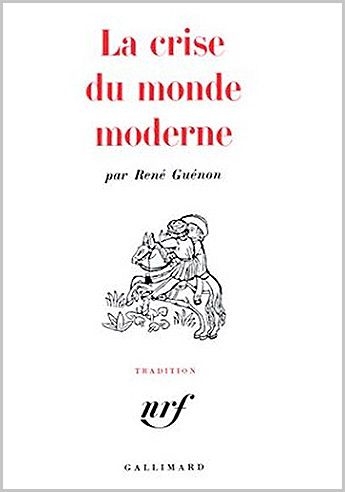 Le mot haine est important ici, qui reflète cette instabilité ontologique, et qui au nom de l’humanisme justifie toutes les sanctions et toutes les violences guerrières. Guénon ajoute sur l’islamophobie :
Le mot haine est important ici, qui reflète cette instabilité ontologique, et qui au nom de l’humanisme justifie toutes les sanctions et toutes les violences guerrières. Guénon ajoute sur l’islamophobie :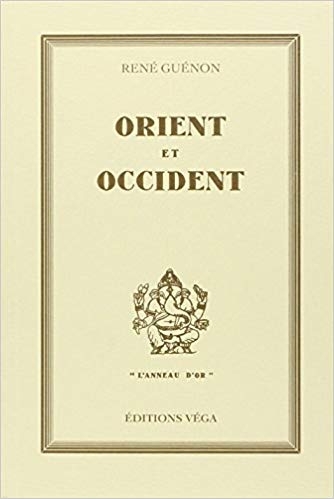 Guénon annonce même dans la deuxième partie de son livre le « grand remplacement » de la population occidentale ignoré par les hypnotisés et plastronné par les terrorisés :
Guénon annonce même dans la deuxième partie de son livre le « grand remplacement » de la population occidentale ignoré par les hypnotisés et plastronné par les terrorisés :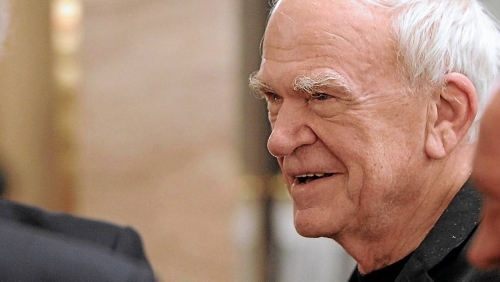
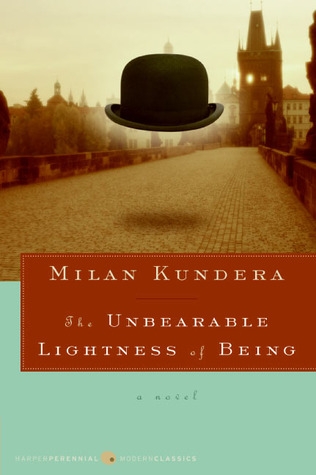 I first read Kundera’s
I first read Kundera’s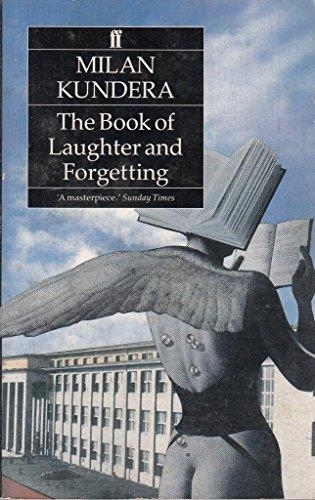 One of the reasons Mao’s genocides are not widely known about is because they are complex and covered two periods over a total of seven years. Information on the internet tends to be reduced into fast-read simplified narratives. If any facts are under dispute we have a tendency to shrug and dismiss the entire issue. So it is precisely the ambiguity over whether Mao’s Communist Party was responsible for 30, 50 or 70 million deaths that leads to internet users giving up on the subject.
One of the reasons Mao’s genocides are not widely known about is because they are complex and covered two periods over a total of seven years. Information on the internet tends to be reduced into fast-read simplified narratives. If any facts are under dispute we have a tendency to shrug and dismiss the entire issue. So it is precisely the ambiguity over whether Mao’s Communist Party was responsible for 30, 50 or 70 million deaths that leads to internet users giving up on the subject.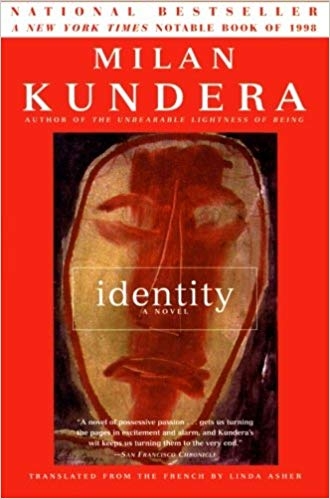 Until the data on the deaths in communist China are definitively agreed, until they enter the history books, conflicting data will keep on being used to conceal the magnitude of Mao’s crimes. We also see this happening with the Ukranian genocide known as Holodomor (1932–33). Different political groups argue about whether the deaths were three million or 10, which then gives space to other groups online who want to deny it ever occurred.
Until the data on the deaths in communist China are definitively agreed, until they enter the history books, conflicting data will keep on being used to conceal the magnitude of Mao’s crimes. We also see this happening with the Ukranian genocide known as Holodomor (1932–33). Different political groups argue about whether the deaths were three million or 10, which then gives space to other groups online who want to deny it ever occurred.

 It may be Nock’s “
It may be Nock’s “
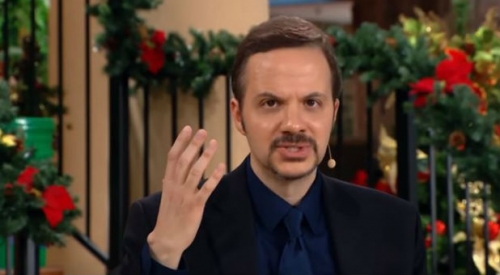
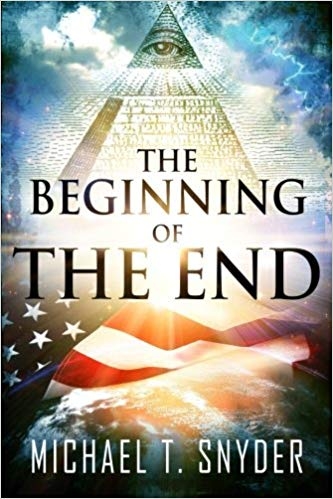 Je lis Michael Snyder et son blog apocalyptique depuis des années et je fais donc attention chaque fois qu’à la télévision on montre des images de la vie quotidienne en Amérique. Or de petits films sur mes espagnols à travers le monde démontrent qu’effectivement les conditions de vie aux USA sont devenues sinistres et hors de prix, sans qu’on puisse évoquer la poétique de Blade runner…Plusieurs amis fortunés qui font aussi des allers et retours et m’ont confirmé que le vieil oncle Sam coûte bien cher, comme Paris, Londres et des milliers d’endroits (même se loger en Bolivie devient un exploit, vive Morales-Bolivar-Chavez…), pour ce qu’il offre ; d’autres amis moins fortunés, universitaires, survivent durement. Car il y a en plus les persécutions politiques qui gagent nos si bienveillantes démocraties…
Je lis Michael Snyder et son blog apocalyptique depuis des années et je fais donc attention chaque fois qu’à la télévision on montre des images de la vie quotidienne en Amérique. Or de petits films sur mes espagnols à travers le monde démontrent qu’effectivement les conditions de vie aux USA sont devenues sinistres et hors de prix, sans qu’on puisse évoquer la poétique de Blade runner…Plusieurs amis fortunés qui font aussi des allers et retours et m’ont confirmé que le vieil oncle Sam coûte bien cher, comme Paris, Londres et des milliers d’endroits (même se loger en Bolivie devient un exploit, vive Morales-Bolivar-Chavez…), pour ce qu’il offre ; d’autres amis moins fortunés, universitaires, survivent durement. Car il y a en plus les persécutions politiques qui gagent nos si bienveillantes démocraties… En vérité les gens supporteraient tout (« l’homme s’habitue à tout », dixit Dostoïevski dans la maison des morts), mais le problème est que cette m… au quotidien est hors de prix ! Donc…
En vérité les gens supporteraient tout (« l’homme s’habitue à tout », dixit Dostoïevski dans la maison des morts), mais le problème est que cette m… au quotidien est hors de prix ! Donc… Les impôts pleuvent comme en France :
Les impôts pleuvent comme en France :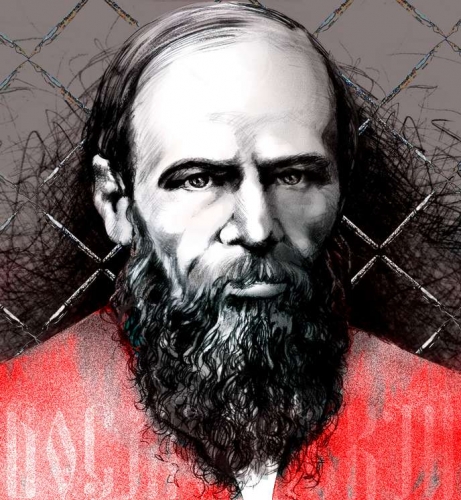
 On reprend donc Raskolnikoff dans ces pages immortelles :
On reprend donc Raskolnikoff dans ces pages immortelles :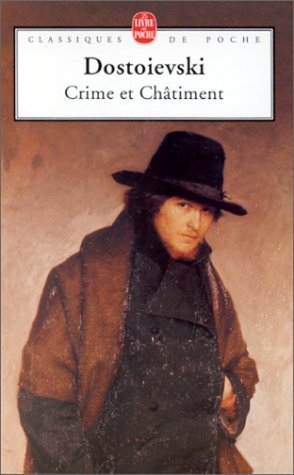 « En un mot, je démontre que non seulement les grands hommes, mais tous ceux qui sortent tant soit peu de l’ornière, tous ceux qui sont capables de dire quelque chose de nouveau, même pas grand-chose, doivent, de par leur nature, être nécessairement plus ou moins des criminels. »
« En un mot, je démontre que non seulement les grands hommes, mais tous ceux qui sortent tant soit peu de l’ornière, tous ceux qui sont capables de dire quelque chose de nouveau, même pas grand-chose, doivent, de par leur nature, être nécessairement plus ou moins des criminels. »
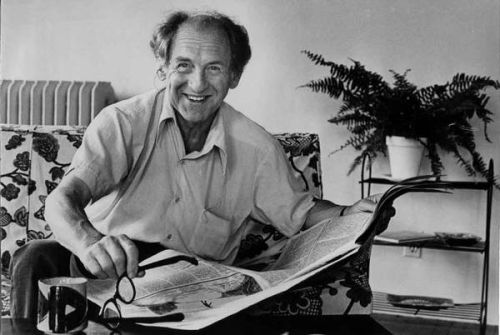
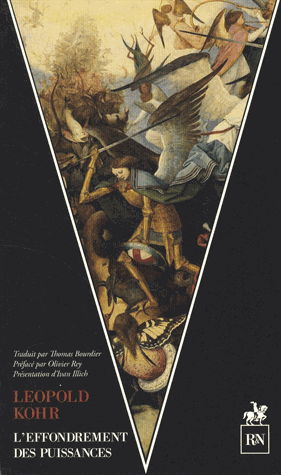 Une chaîne d’information en continu, afin de tenir l’antenne pendant des heures, doit créer de nouvelles formes de discours, inventer des méthodes de remplissage contraires à toute logique proportionnelle, pour reprendre le concept essentiel de Leopold Kohr. Nous appelons encore aujourd’hui information ou journalisme des discours et des pratiques récemment apparus à partir d’un certain seuil critique. Au-delà de ce seuil s’opère une réversion. L’information de masse, diffusée en continu, en direct, ce babille incontinent de discours incapables de faire retour sur eux-mêmes, de s’entendre, se transforme en désinformation de masse. Le journalisme, sommé de capter tous les bruits du monde, de faire droit aux moindres insignifiances, de tout accueillir pour ne rien rater, de se brancher sur tous les flux, s’effondre sous les données qu’il amasse aléatoirement. Toujours grossir, tel est l’adage de la modernité tardive. Augmenter sa taille, accroître sa diffusion, saturer les écrans, envahir les étals. Jusqu’au collapse. A une certaine échelle de taille, plus rien n’est possible. Il en va de même pour le discours critique qui a besoin, pour se déployer, d’être protégé de l’inflation, de se tenir en-deçà de toute masse critique, de créer son propre écosystème.
Une chaîne d’information en continu, afin de tenir l’antenne pendant des heures, doit créer de nouvelles formes de discours, inventer des méthodes de remplissage contraires à toute logique proportionnelle, pour reprendre le concept essentiel de Leopold Kohr. Nous appelons encore aujourd’hui information ou journalisme des discours et des pratiques récemment apparus à partir d’un certain seuil critique. Au-delà de ce seuil s’opère une réversion. L’information de masse, diffusée en continu, en direct, ce babille incontinent de discours incapables de faire retour sur eux-mêmes, de s’entendre, se transforme en désinformation de masse. Le journalisme, sommé de capter tous les bruits du monde, de faire droit aux moindres insignifiances, de tout accueillir pour ne rien rater, de se brancher sur tous les flux, s’effondre sous les données qu’il amasse aléatoirement. Toujours grossir, tel est l’adage de la modernité tardive. Augmenter sa taille, accroître sa diffusion, saturer les écrans, envahir les étals. Jusqu’au collapse. A une certaine échelle de taille, plus rien n’est possible. Il en va de même pour le discours critique qui a besoin, pour se déployer, d’être protégé de l’inflation, de se tenir en-deçà de toute masse critique, de créer son propre écosystème.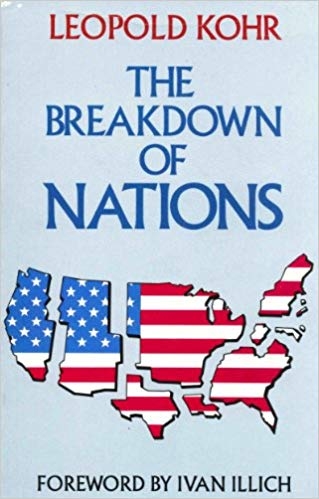 Leopold Kohr cite Jonathan Swift : « on observe que plus les créatures humaines sont corpulentes, plus elles sont sauvages et cruelles en proportion. » Cette corpulence doit être comprise comme la métaphore d’une disproportion qui s’accroit avec l’accumulation tératologique des capitaux des uns, de la misère économique, culturelle et symbolique des autres. Cette tendance s’accompagne d’un retrait progressif de la contestation. En face d’une force sans partage, dont on sait qu’elle nous écrasera plutôt que de se limiter en reconnaissant sa limite, « la force du désaccord humain, de l’esprit critique, montre une tendance proportionnelle à décroitre tout aussi naturellement » remarque Leopold Kohr. Il attribue cette tendance, cette sensibilité décroissante, à une sorte d’instinct, à l’intérêt pour notre propre survie. Cet intérêt s’accompagne « d’un engourdissement moral adapté aux situations ». Paradoxalement, au-lieu de se révolter contre l’accumulation d’injustices, impuissant à agir face à un géant qui le piétine, « l’être humain ordinaire, ajoute Leopold Kohr, est plutôt enclin à perdre le peu de conscience qui lui restait quand les victimes n’étaient pas encore trop nombreuses. » Cette structure défensive transforme l’être humain ordinaire en un simple spectateur de ce qui lui arrive. Il contemple la démesure, sidéré, préférant renoncer à l’esprit critique plutôt que d’éprouver dans sa chair la réalité de son impuissance.
Leopold Kohr cite Jonathan Swift : « on observe que plus les créatures humaines sont corpulentes, plus elles sont sauvages et cruelles en proportion. » Cette corpulence doit être comprise comme la métaphore d’une disproportion qui s’accroit avec l’accumulation tératologique des capitaux des uns, de la misère économique, culturelle et symbolique des autres. Cette tendance s’accompagne d’un retrait progressif de la contestation. En face d’une force sans partage, dont on sait qu’elle nous écrasera plutôt que de se limiter en reconnaissant sa limite, « la force du désaccord humain, de l’esprit critique, montre une tendance proportionnelle à décroitre tout aussi naturellement » remarque Leopold Kohr. Il attribue cette tendance, cette sensibilité décroissante, à une sorte d’instinct, à l’intérêt pour notre propre survie. Cet intérêt s’accompagne « d’un engourdissement moral adapté aux situations ». Paradoxalement, au-lieu de se révolter contre l’accumulation d’injustices, impuissant à agir face à un géant qui le piétine, « l’être humain ordinaire, ajoute Leopold Kohr, est plutôt enclin à perdre le peu de conscience qui lui restait quand les victimes n’étaient pas encore trop nombreuses. » Cette structure défensive transforme l’être humain ordinaire en un simple spectateur de ce qui lui arrive. Il contemple la démesure, sidéré, préférant renoncer à l’esprit critique plutôt que d’éprouver dans sa chair la réalité de son impuissance.
 Comme toute guerre, celle dans laquelle nous sommes engagés sans réserve nécessite une mobilisation totale. Et comme toujours dans l’histoire, les porteurs de vérité sont peu nombreux. Ils assument le rôle d’avant-garde sur le front intellectuel, portant la responsabilité morale d’une élite authentique pour guider leur nation vers l’objectif consistant à se libérer du joug de ce nouveau type d’impérialisme extraterritorial. Lucien Cerise défie fermement toutes les limitations imposées par la dictature du politiquement correct. Il parvient à détruire jusque dans les moindres détails le fonctionnement du Système dans ses dimensions géopolitique, militaire, économique, culturelle, éducative et médiatique. L’enjeu de cette guerre totale est sans précédent dans l’histoire de l’humanité puisqu’il s’agit, ni plus ni moins, de sauver l’espèce humaine de son extinction.
Comme toute guerre, celle dans laquelle nous sommes engagés sans réserve nécessite une mobilisation totale. Et comme toujours dans l’histoire, les porteurs de vérité sont peu nombreux. Ils assument le rôle d’avant-garde sur le front intellectuel, portant la responsabilité morale d’une élite authentique pour guider leur nation vers l’objectif consistant à se libérer du joug de ce nouveau type d’impérialisme extraterritorial. Lucien Cerise défie fermement toutes les limitations imposées par la dictature du politiquement correct. Il parvient à détruire jusque dans les moindres détails le fonctionnement du Système dans ses dimensions géopolitique, militaire, économique, culturelle, éducative et médiatique. L’enjeu de cette guerre totale est sans précédent dans l’histoire de l’humanité puisqu’il s’agit, ni plus ni moins, de sauver l’espèce humaine de son extinction.  Dans notre cas, cela évoque l’exacerbation maladive des obsessions et des traumatismes des communautés roumanophone et russophone en nourrissant des représentations catastrophiques sur certaines périodes historiques. L’une des parties du conflit occupe la place de la victime, et l’autre partie a le rôle de bourreau, chacune des parties ayant sur sa propre identité une perception narcissique en symétrie inversée dans une structure duelle où les rôles bourreau-victime sont interchangeables. Ainsi, le sentiment de frustration suscité par une injustice réelle ou imaginaire se transforme en une soif de vengeance par annihilation du groupe bourreau, associé au mal absolu. Ce procédé d’ingénierie sociale négative connaît un succès majeur en République de Moldavie en raison de la rivalité d’influence entre la Russie et la Roumanie sur notre territoire, historiquement explicable, mais contre-productive et exploitée avec perversité à l’heure actuelle. Par conséquence, les russophiles qui sont obligatoirement roumanophobes se confrontent avec les roumanophiles qui sont par définition russophobes, les moldovenistes sont en guerre avec les unionistes identitaires, et cela dure depuis des décennies. Et les efforts d’éclaircissements sur le caractère stérile de cette guerre d’identité sans fin sont rejetés avec agressivité et dans l’opacité totale. Qui profite de cette bataille absurde de deux camps également perdants ? Il existe deux niveaux d’acteurs gagnants qui restent plus ou moins dissimulés.
Dans notre cas, cela évoque l’exacerbation maladive des obsessions et des traumatismes des communautés roumanophone et russophone en nourrissant des représentations catastrophiques sur certaines périodes historiques. L’une des parties du conflit occupe la place de la victime, et l’autre partie a le rôle de bourreau, chacune des parties ayant sur sa propre identité une perception narcissique en symétrie inversée dans une structure duelle où les rôles bourreau-victime sont interchangeables. Ainsi, le sentiment de frustration suscité par une injustice réelle ou imaginaire se transforme en une soif de vengeance par annihilation du groupe bourreau, associé au mal absolu. Ce procédé d’ingénierie sociale négative connaît un succès majeur en République de Moldavie en raison de la rivalité d’influence entre la Russie et la Roumanie sur notre territoire, historiquement explicable, mais contre-productive et exploitée avec perversité à l’heure actuelle. Par conséquence, les russophiles qui sont obligatoirement roumanophobes se confrontent avec les roumanophiles qui sont par définition russophobes, les moldovenistes sont en guerre avec les unionistes identitaires, et cela dure depuis des décennies. Et les efforts d’éclaircissements sur le caractère stérile de cette guerre d’identité sans fin sont rejetés avec agressivité et dans l’opacité totale. Qui profite de cette bataille absurde de deux camps également perdants ? Il existe deux niveaux d’acteurs gagnants qui restent plus ou moins dissimulés. 






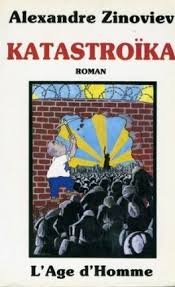
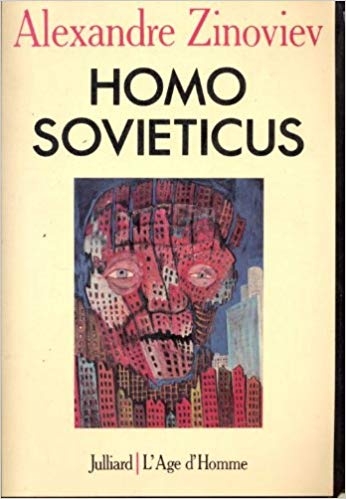

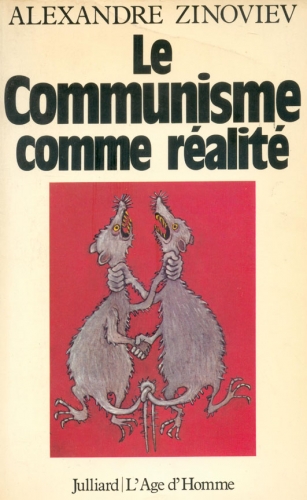
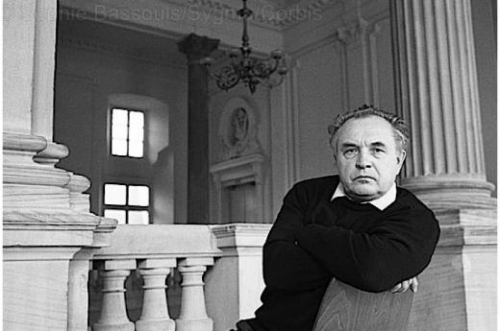
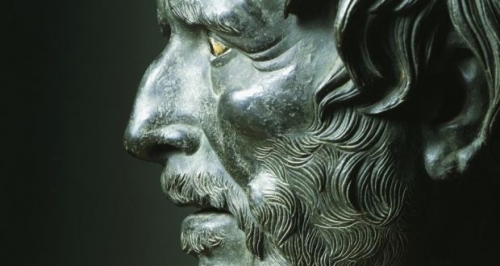
 « Les Argonautes ont fait tomber la première barrière et ce premier écroulement a provoqué de proche en proche la chute de toutes les barrières qui séparaient les peuples les uns des autres, le monde civilisé du monde barbare, le cosmos de tous les au-delà, merveilleux ou épouvantables. »
« Les Argonautes ont fait tomber la première barrière et ce premier écroulement a provoqué de proche en proche la chute de toutes les barrières qui séparaient les peuples les uns des autres, le monde civilisé du monde barbare, le cosmos de tous les au-delà, merveilleux ou épouvantables. »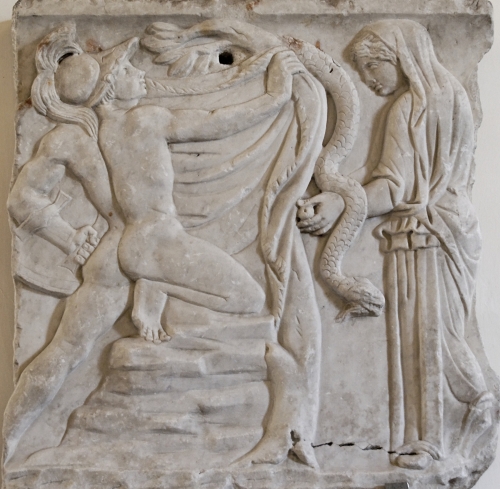
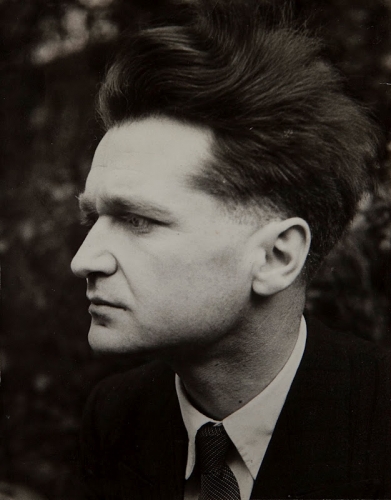
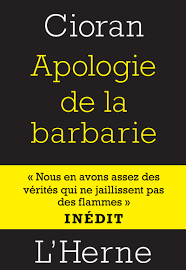 Emil Cioran
Emil Cioran A rare and stimulating combination in Cioran’s writings: unsentimental observation and intense pathos.
A rare and stimulating combination in Cioran’s writings: unsentimental observation and intense pathos.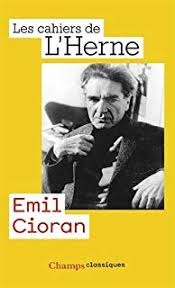 But fascism cannot work miracles. Politics must work with the human material and historical trajectory that one has. That is being true to oneself. To wish for total transformation and the tabula rasa is to invite disaster. Such revolutions are generally an exercise in self-harm. Once the passions and intoxications have settled, one finds the nation stunted and lessened: by civil war, by tyranny, by self-mutilation and deformation in the stubborn in the name of utopian goals. The historic gap with the ‘advanced’ nations is widened further still by the ordeal.
But fascism cannot work miracles. Politics must work with the human material and historical trajectory that one has. That is being true to oneself. To wish for total transformation and the tabula rasa is to invite disaster. Such revolutions are generally an exercise in self-harm. Once the passions and intoxications have settled, one finds the nation stunted and lessened: by civil war, by tyranny, by self-mutilation and deformation in the stubborn in the name of utopian goals. The historic gap with the ‘advanced’ nations is widened further still by the ordeal.
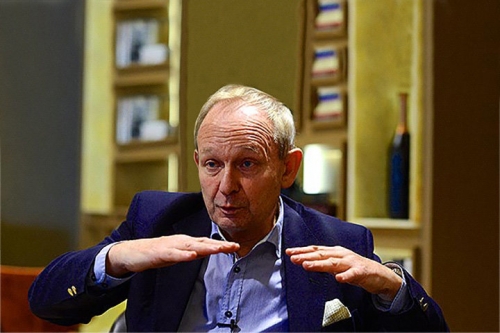
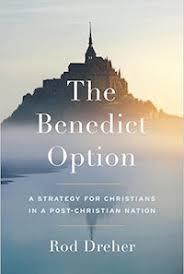 Mais permettez-moi de citer deux passages de The Benedict Option :
Mais permettez-moi de citer deux passages de The Benedict Option : 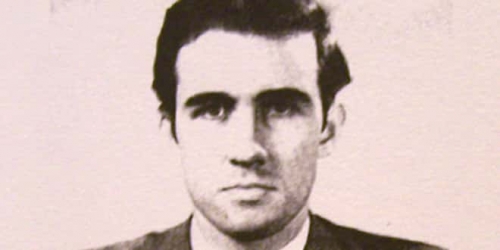
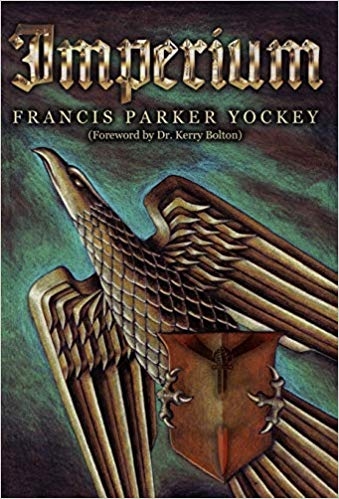 René Girard a parlé de l’Amérique comme puissance mimétique. Sur cette planète de crétins en effet tout le monde veut devenir américain, y compris quand il s’agit de payer des études à quarante mille euros/an, des opérations à 200 000 euros, de devenir obèse et même abruti par la consommation de médias et d’opiacés...
René Girard a parlé de l’Amérique comme puissance mimétique. Sur cette planète de crétins en effet tout le monde veut devenir américain, y compris quand il s’agit de payer des études à quarante mille euros/an, des opérations à 200 000 euros, de devenir obèse et même abruti par la consommation de médias et d’opiacés... Le cinéaste Tim Burton a bien moqué ce comportement homogénéisé/industriel dans plusieurs de ses films, par exemple Edouard aux mains d’argent. Kazan avait fait de même dans l’Arrangement. Aujourd’hui ce comportement monolithique/industriel s’applique à l’humanitaire, à la déviance, à la marginalité, au transsexualisme, au tatouage, au piercing, etc.
Le cinéaste Tim Burton a bien moqué ce comportement homogénéisé/industriel dans plusieurs de ses films, par exemple Edouard aux mains d’argent. Kazan avait fait de même dans l’Arrangement. Aujourd’hui ce comportement monolithique/industriel s’applique à l’humanitaire, à la déviance, à la marginalité, au transsexualisme, au tatouage, au piercing, etc. 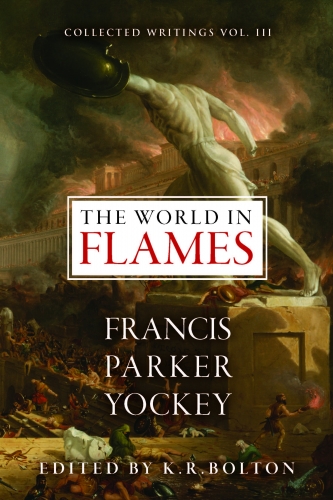 La musique est rarement entendue en Amérique, ayant été remplacée par le battement de tambour sans culture du noir. Comme le dit un musicologue américain: «Le rythme du jazz, tiré de tribus sauvages, est à la fois raffiné et élémentaire et correspond aux dispositions de notre âme moderne. Cela nous excite sans répit, comme le battement de tambour primitif du danseur de la prière. Mais il ne s'arrête pas là. Il doit en même temps tenir compte de l'excitabilité de la psyché moderne. Nous avons soif de stimuli rapides, excitants et en constante évolution. La musique est un excellent moyen d’excitation, syncopé, qui a fait ses preuves. »
La musique est rarement entendue en Amérique, ayant été remplacée par le battement de tambour sans culture du noir. Comme le dit un musicologue américain: «Le rythme du jazz, tiré de tribus sauvages, est à la fois raffiné et élémentaire et correspond aux dispositions de notre âme moderne. Cela nous excite sans répit, comme le battement de tambour primitif du danseur de la prière. Mais il ne s'arrête pas là. Il doit en même temps tenir compte de l'excitabilité de la psyché moderne. Nous avons soif de stimuli rapides, excitants et en constante évolution. La musique est un excellent moyen d’excitation, syncopé, qui a fait ses preuves. »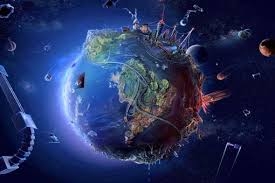
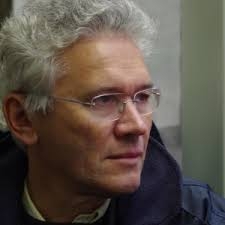 Le progrès, une idéologie d’avenir ?
Le progrès, une idéologie d’avenir ?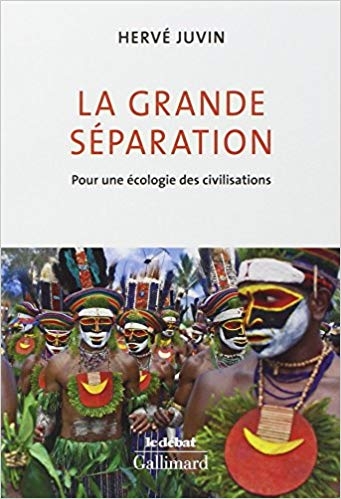 La société multiculturelle était l’avenir ; elle abolit les frontières ; elle ne connaît la diversité qu’individuelle, et elle nous promet la paix et l’amitié entre tous les hommes unis par le commerce. Ils ne formeront plus des peuples, mais une humanité dans laquelle tous font valoir les mêmes droits, partagent les mêmes désirs, bref, deviennent les mêmes. La croissance allait sauver le monde ; la Chine marchait vers la démocratie à mesure que le bol de riz se remplissait. Le droit et le marché en avaient fini avec la politique ; la puissance, la souveraineté, la Nation, autant de vestiges à mettre au grenier. Ajoutons que le monde est à nous, que nous nous levons chaque matin pour tout changer, que tous les milliardaires du monde n’aspirent qu’à construire un monde meilleur, et que la liberté oublieuse du passé assure que chacune, que chacun se construise lui-même un avenir radieux.
La société multiculturelle était l’avenir ; elle abolit les frontières ; elle ne connaît la diversité qu’individuelle, et elle nous promet la paix et l’amitié entre tous les hommes unis par le commerce. Ils ne formeront plus des peuples, mais une humanité dans laquelle tous font valoir les mêmes droits, partagent les mêmes désirs, bref, deviennent les mêmes. La croissance allait sauver le monde ; la Chine marchait vers la démocratie à mesure que le bol de riz se remplissait. Le droit et le marché en avaient fini avec la politique ; la puissance, la souveraineté, la Nation, autant de vestiges à mettre au grenier. Ajoutons que le monde est à nous, que nous nous levons chaque matin pour tout changer, que tous les milliardaires du monde n’aspirent qu’à construire un monde meilleur, et que la liberté oublieuse du passé assure que chacune, que chacun se construise lui-même un avenir radieux.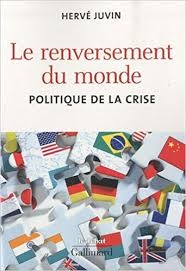 L’avenir a changé de sens, et le progrès est l’inverse de ce qu’une politique française entêtée, aveugle et autiste, fait subir aux Français. Partout, l’État Nation est la forme politique de la modernité, et partout, les États Nations cherchent à affirmer leur unité interne, pour mieux faire face aux défis extérieurs qui se multiplient. Partout, la frontière retrouve sa fonction vitale ; faire le tri entre ce qui vient de l’extérieur, qui est utile, choisi, et qui entre, et ce qui est dangereux, toxique, et qui reste à l’extérieur. Partout, l’unité nationale est une priorité.
L’avenir a changé de sens, et le progrès est l’inverse de ce qu’une politique française entêtée, aveugle et autiste, fait subir aux Français. Partout, l’État Nation est la forme politique de la modernité, et partout, les États Nations cherchent à affirmer leur unité interne, pour mieux faire face aux défis extérieurs qui se multiplient. Partout, la frontière retrouve sa fonction vitale ; faire le tri entre ce qui vient de l’extérieur, qui est utile, choisi, et qui entre, et ce qui est dangereux, toxique, et qui reste à l’extérieur. Partout, l’unité nationale est une priorité. Voilà notre situation historique. Un nouvel obscurantisme nous rend prisonniers. Il s’appelle globalisme, multiculturalisme, individualisme. L’idéologie qu’il constitue est rétrograde, elle répète des refrains qui ont trente ans d’âge, et elle nous bouche l’avenir. Nous devons allumer d’autres Lumières pour faire reculer l’obscurité, et nous libérer des mensonges officiels comme des inquisiteurs qui appellent « fake news » ce qui révèle les mensonges de l’oligarchie au pouvoir. Nous devons suivre l’enseignement de Spinoza, de Kant, et nous libérer de la religion laïque de l’économie, qui a remplacé les religions divines sans rien tenir de leurs promesses ! L’avenir s’appelle Nation, s’appelle citoyen, s’appelle frontières. Le changement s’appelle sécurité, autorité, et stabilité. Et le progrès s’appelle demeurer Français, bien chez nous, bien sûr notre territoire, bien dans nos frontières, pour être à l’aise dans le monde.
Voilà notre situation historique. Un nouvel obscurantisme nous rend prisonniers. Il s’appelle globalisme, multiculturalisme, individualisme. L’idéologie qu’il constitue est rétrograde, elle répète des refrains qui ont trente ans d’âge, et elle nous bouche l’avenir. Nous devons allumer d’autres Lumières pour faire reculer l’obscurité, et nous libérer des mensonges officiels comme des inquisiteurs qui appellent « fake news » ce qui révèle les mensonges de l’oligarchie au pouvoir. Nous devons suivre l’enseignement de Spinoza, de Kant, et nous libérer de la religion laïque de l’économie, qui a remplacé les religions divines sans rien tenir de leurs promesses ! L’avenir s’appelle Nation, s’appelle citoyen, s’appelle frontières. Le changement s’appelle sécurité, autorité, et stabilité. Et le progrès s’appelle demeurer Français, bien chez nous, bien sûr notre territoire, bien dans nos frontières, pour être à l’aise dans le monde.


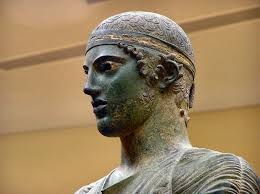
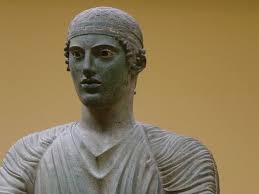
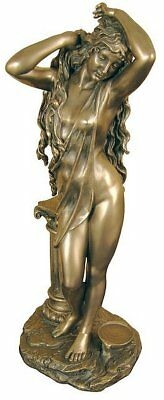 Les caractéristiques et le comportement des abeilles et d'autres insectes
Les caractéristiques et le comportement des abeilles et d'autres insectes